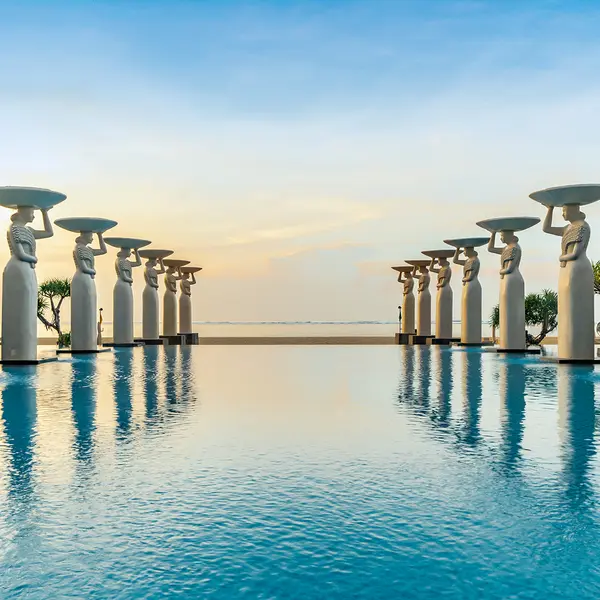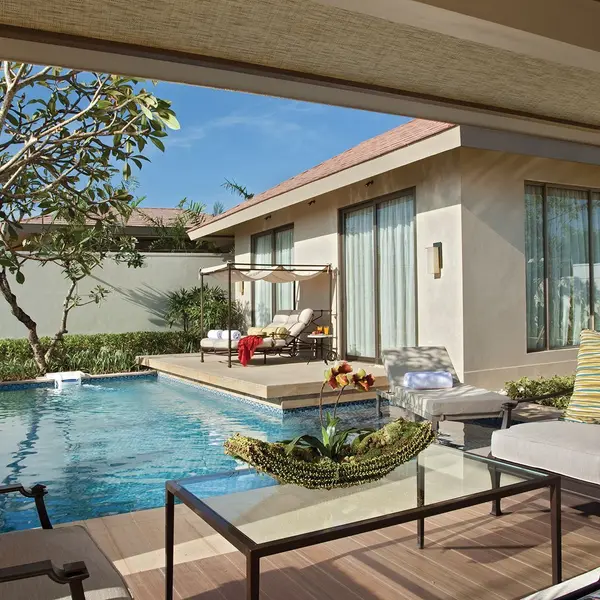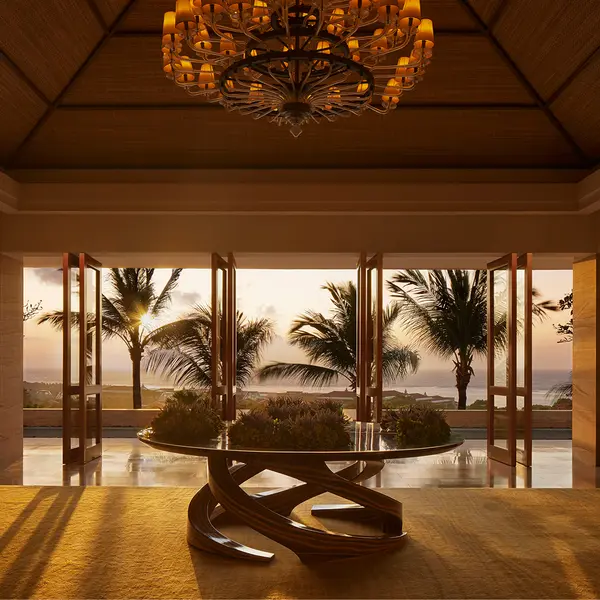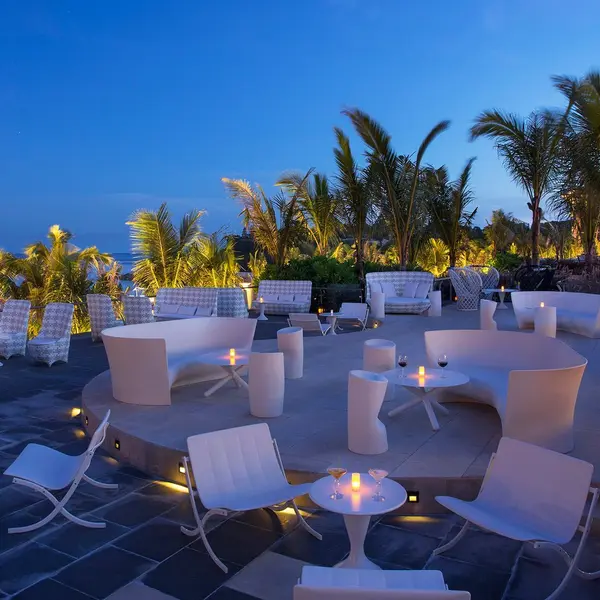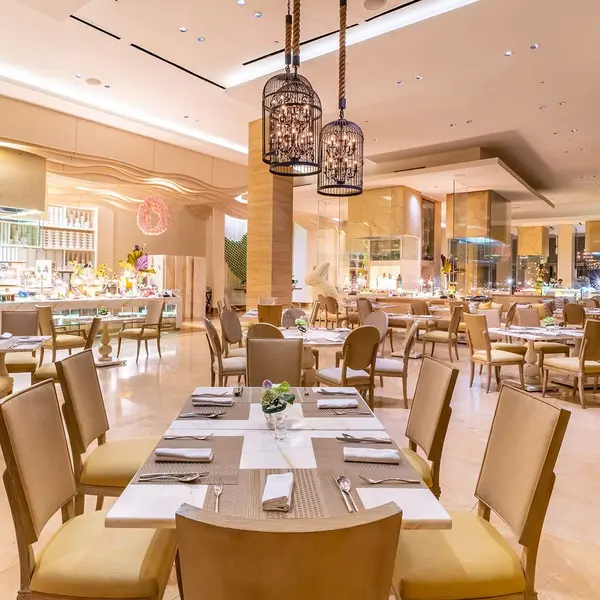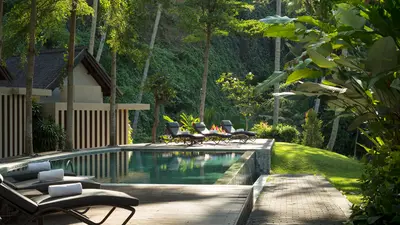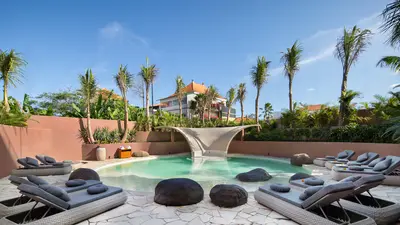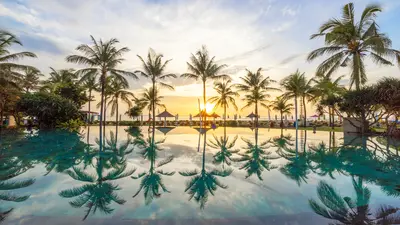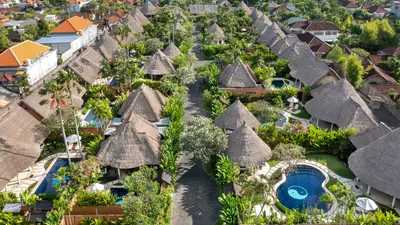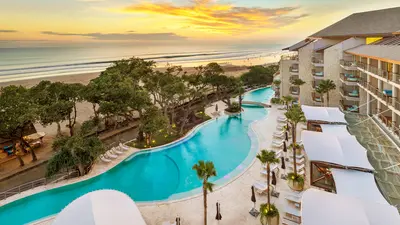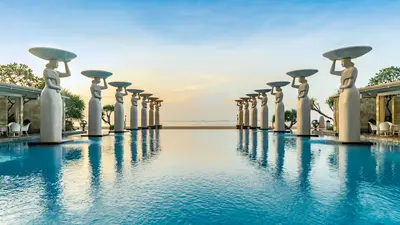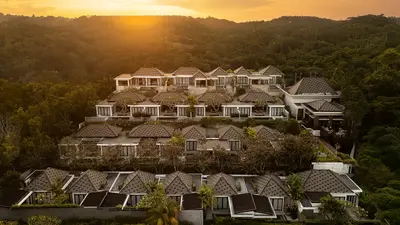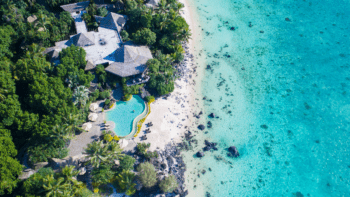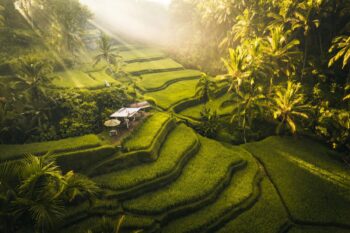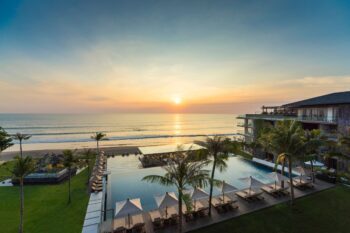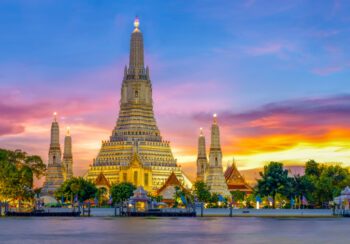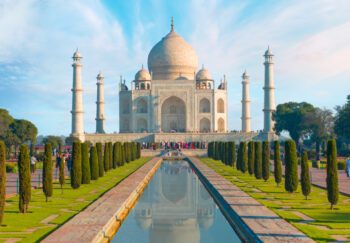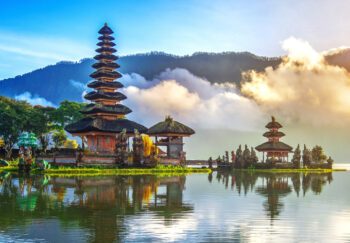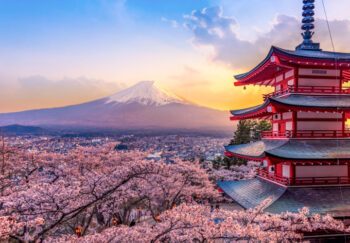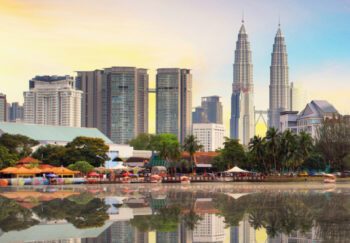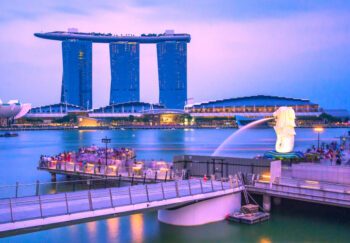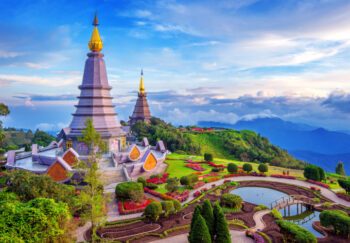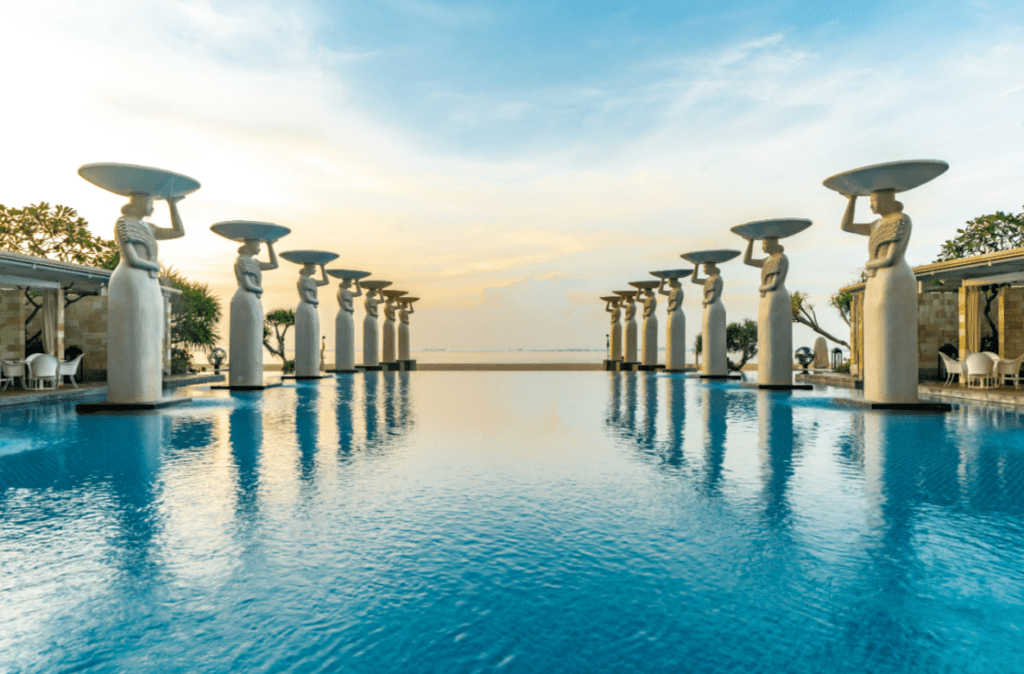
Two imposing rows of maternal figures, five metres high, stand either side of the Oasis Pool and stretch onto the sand beyond. These statues are all women with impeccable posture, each one balancing a huge plate on their head, holding a bundle of rice across their collective hearts. Elsewhere, still more giant women cradle a blossoming lotus flower.
I am being taken on a buggy tour of The Mulia on the shores of Nusa Dua in Bali. My driver, and the resort’s supervising butler, Debi Saputra, speeds beneath the tropical canopy past the wedding chapel in the centre of a blue reflecting pool, to the alluring day spa, and through the perfectly manicured gardens. And, finally, to the main pool lined with these striking women, so I ask Debi who they are.
It’s a straightforward answer: they epitomise the very essence of traditional Balinese values – dedication, warm hospitality and self-sacrifice. This representation goes beyond the physical and enters the realm of symbolism. “The flower symbolises the daily offerings made to the gods, the bowl of water signifies purification and cleansing deeply rooted in our tradition, and the bundle of rice represents the blessings of prosperity,” a profound reflection of Balinese culture.
Heartfelt hospitality
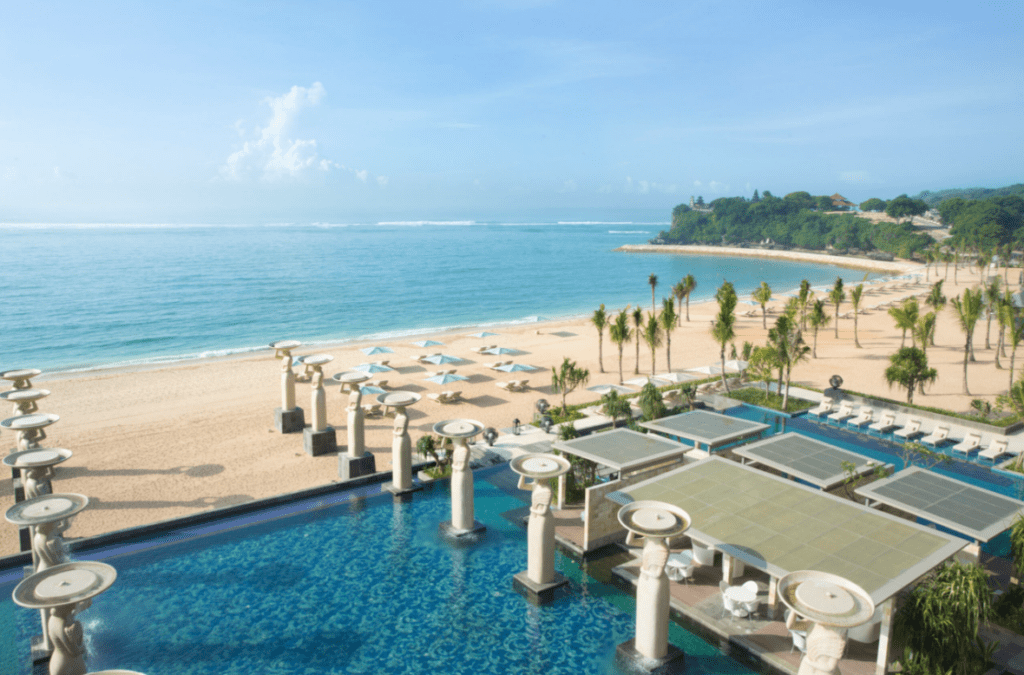
The thing you notice on a tropical buggy ride is the sheer size of the resort – 745 rooms, suites, and villas spread across 30 sprawling hectares of tropical gardens. The Mulia Spa has 20 treatment rooms, Finnish saunas, meditative steam rooms and hydrotherapy pools. For little ones, there’s a kids’ club, tennis academy, swimming lessons, yoga and a splash pool with slides.
Packing this much in the resort should feel overwhelming but it has a personal touch that makes it feel closer in spirit to a boutique hotel. From the moment I set foot in the resort, each staff member refers to
me by name without me having introduced myself, making me feel like the centre of their universe.
Entering my stay, the Earl Suite, it is an oasis of calm browns and oranges, with framed sketches of Balinese women in traditional dress. I also have a view over the matronly statues of the Oasis Pool, where staff in sedge hats are working on the garden.
On this beautiful day in Bali, I decide to take a refreshing dip at The Mulia, a stunning beachfront infinity pool — one of Bali’s longest — that offers an enhanced sense of privacy thanks to its cabanas and sun lounges.
Dine on the divine
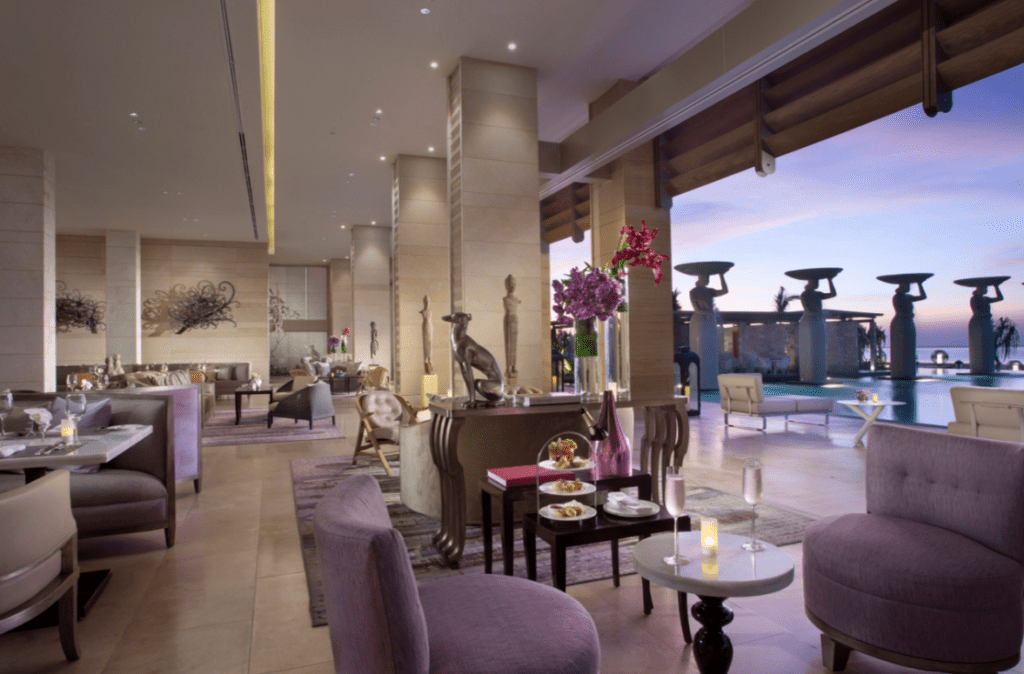
For a resort that takes its cues from warm Balinese hospitality, the food at The Mulia is of the utmost importance. There are six restaurants and four bars to choose from.
Starting with the Sky Bar’s stellar collection of cocktails and Spanish tapas. Here, I enjoy an espresso martini while feeling the salty breeze off the Indian Ocean, before heading downstairs to Soleil restaurant. Soleil sits on the water’s edge and is run by a team of brilliant chefs, who are experts in the art of Mediterranean and Pan-Asian fusion. Locally caught seafood is transformed into a degustation menu of handcrafted pastas, delicate wontons, and flavoursome pipis, followed by a perfectly bitter-sweet tiramisu.
At The Café, decked out with plush couches on the terrace overlooking the gardens, they serve a buffet breakfast that may well qualify as the eighth wonder of the world. Sushi shines on ice in one corner, French desserts are displayed in their own room around a central gelato station, fluffy omelettes are cooked to order and traditional Indonesian noodles catch your eye.
Local culture is celebrated across the resort including an authentic Indonesian banquet dinner spread across the lawns of the Eden Garden, hosted once a week. The lawns of the garden are lit by lanterns
and there is an array of wooden market-style buffet stalls lining the perimeter. Each stall allows its chosen meal or ingredient to shine in the traditional street-food style, immersing me in Balinese heritage.
I move from the rich broth of chicken and seafood soups to spiced chicken breast, skewers, and through to chargrilled barbecue prawns. As I dine, a spectacular display of Balinese dancing begins on stage with bright colours, traditional makeup and delicately pointed fingers – a skill the performers practice for many hours each day, and one that I did not master in the brief time I was invited to join them on stage.
By the end of my stay, I realise that these values do not just reside in the statues; they are present in every aspect of The Mulia. They are in each heartfelt smile from the staff, in the chef’s passion for food, and the spirit of hospitality is what I will take home with me after my stay at The Mulia.
This article was originally featured in the third issue of Dream by Luxury Escapes magazine. Get your copy here.

